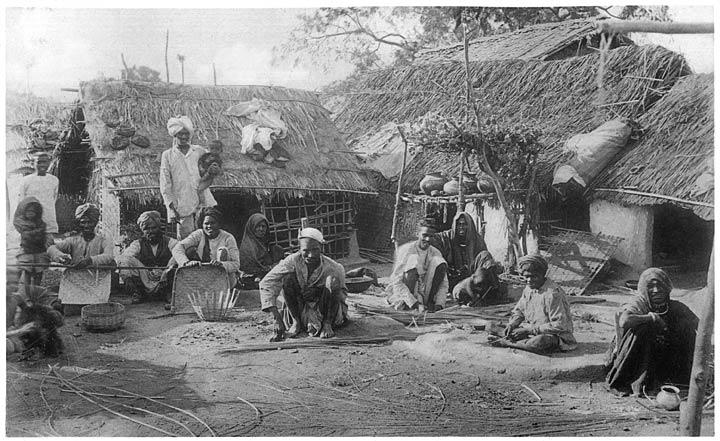|
Anna Dharmam
{{Ayyavazhi Anna Dharmam is a term used for an Ayyavazhi ritual that involves sharing food without inter-dining. Inter-dining refers to the act of dining within one's own caste, and excluding others. The practice of Anna Dharmam may have emerged in association with inter-dining. Origin Inter-dining was an important activity that originated in the gatherings of Ayyavazhi. People of different castes would travel bringing with them food materials for cooking their meals when they came to meet Ayya Vaikundar. Food, with its ritual significance, was distributed to the needy and to all those gathered around Ayya Vaikundar Ayya Vaikundar (c.1833 –c.1851) ( ta, அய்யா வைகுண்டர், sa, अय्या वैघुण्ढर्) also known as Vaikunda Swami is the first and the foremost Purna avatar of Eka-Paran born to Lord .... They cooked and ate in the presence of Ayya Vaikundar. This common place action evolved into a significant practice ... [...More Info...] [...Related Items...] OR: [Wikipedia] [Google] [Baidu] |
Ayyavazhi Rituals
Ayyavazhi rituals are the religious practices prevalent among the followers of Ayyavazhi. Most of them are connected with Akilam and Arul Nool and a few, though not associated with the holy books, are practiced for over a century right from the beginning of Ayyavazhi. Some practices are unique for Pathis and some others are common for all worship centres. Forms of worship and the features attendant on them can be said to be manifestations and indicators of the type of religiosity present in a religious universe. Apart from Basement of Philosophy and Theology, the various religious practices of Ayyavazhi are also the pillars on which it stands to prove its uniqueness. From the sociological point of view, it also strengthens both physically and mentally the socially downtrodden in a religious way. Several practices evolved in the Ayyavazhi tradition. Religious experience that was existent in Ayyavazhi seems to have expressed itself through certain forms with specific features a ... [...More Info...] [...Related Items...] OR: [Wikipedia] [Google] [Baidu] |
Caste
Caste is a form of social stratification characterised by endogamy, hereditary transmission of a style of life which often includes an occupation, ritual status in a hierarchy, and customary social interaction and exclusion based on cultural notions of purity and pollution. * Quote: "caste ort., casta=basket ranked groups based on heredity within rigid systems of social stratification, especially those that constitute Hindu India. Some scholars, in fact, deny that true caste systems are found outside India. The caste is a closed group whose members are severely restricted in their choice of occupation and degree of social participation. Marriage outside the caste is prohibited. Social status is determined by the caste of one's birth and may only rarely be transcended." * Quote: "caste, any of the ranked, hereditary, endogamous social groups, often linked with occupation, that together constitute traditional societies in South Asia, particularly among Hindus in India. Although ... [...More Info...] [...Related Items...] OR: [Wikipedia] [Google] [Baidu] |
Ayyavazhi
Ayyavazhi ( ta, அய்யாவழி, ml, അയ്യാവഴി ''Ayyāvaḻi'' , ) is a henotheistic belief that originated in South India.Tha. Krishna Nathan, ''Ayyaa vaikuNdarin vaazvum sinthanaiyum'', p. 62: "" (The day at which Vaikundar is given rebirth could be considered as the date of origin of the Ayyavazhi religion.) Though generally regarded as a branch of Hinduism, it is cited as an independent monistic belief by several newspapers, government reports, and academic researchers.Graham Harvey and Robert J. Wallis, (2007), ''Historical Dictionary of Shamanism'', , Scarecrow Press, pp. 101 Ayyavazhi is centered on the life and preachings of Ayya Vaikundar; its ideas and philosophy are based on the holy texts '' Akilathirattu Ammanai'' and '' Arul Nool''. Accordingly, Ayya Vaikundar was the Purna avatar of Narayana. Ayyavazhi shares many ideas with Hinduism in its beliefs and practice, but differs considerably in its concepts of good and evil and dharma. Ay ... [...More Info...] [...Related Items...] OR: [Wikipedia] [Google] [Baidu] |
Ayya Vaikundar
Ayya Vaikundar (c.1833 –c.1851) ( ta, அய்யா வைகுண்டர், sa, अय्या वैघुण्ढर्) also known as Vaikunda Swami is the first and the foremost Purna avatar of Eka-Paran born to Lord Narayana and his consort Goddess Lakshmi at the Sea of Tiruchendur on the 20th of Masi, 1008 K.E (1 March 1833 CE). Embodied with the triune God-heads along with all lesser devas, Lord Narayana assumes his ninth incarnation at the sea-shore of Tiruchendur just before the birth of Ayya Vaikundar. It was this Avatar of Lord Narayana whom give birth to Ayya Vaikundar later, and all these events are part of his grand and systematic framework for the destruction of Kali. Earlier, as the time for the destruction of Kali approaches, Goddess Lakshmi, who includes all Devis (feminine forms of Devas) of the divine cosmos into herself, was sent to Sea of Tiruchendur to grow as a giant golden fish called Makara. It was from her womb the Infan ... [...More Info...] [...Related Items...] OR: [Wikipedia] [Google] [Baidu] |
Ayyavazhi Religious Practices
Ayyavazhi rituals are the religious practices prevalent among the followers of Ayyavazhi. Most of them are connected with Akilam and Arul Nool and a few, though not associated with the holy books, are practiced for over a century right from the beginning of Ayyavazhi. Some practices are unique for Pathis and some others are common for all worship centres. Forms of worship and the features attendant on them can be said to be manifestations and indicators of the type of religiosity present in a religious universe. Apart from Basement of Philosophy and Theology, the various religious practices of Ayyavazhi are also the pillars on which it stands to prove its uniqueness. From the sociological point of view, it also strengthens both physically and mentally the socially downtrodden in a religious way. Several practices evolved in the Ayyavazhi tradition. Religious experience that was existent in Ayyavazhi seems to have expressed itself through certain forms with specific features ... [...More Info...] [...Related Items...] OR: [Wikipedia] [Google] [Baidu] |



